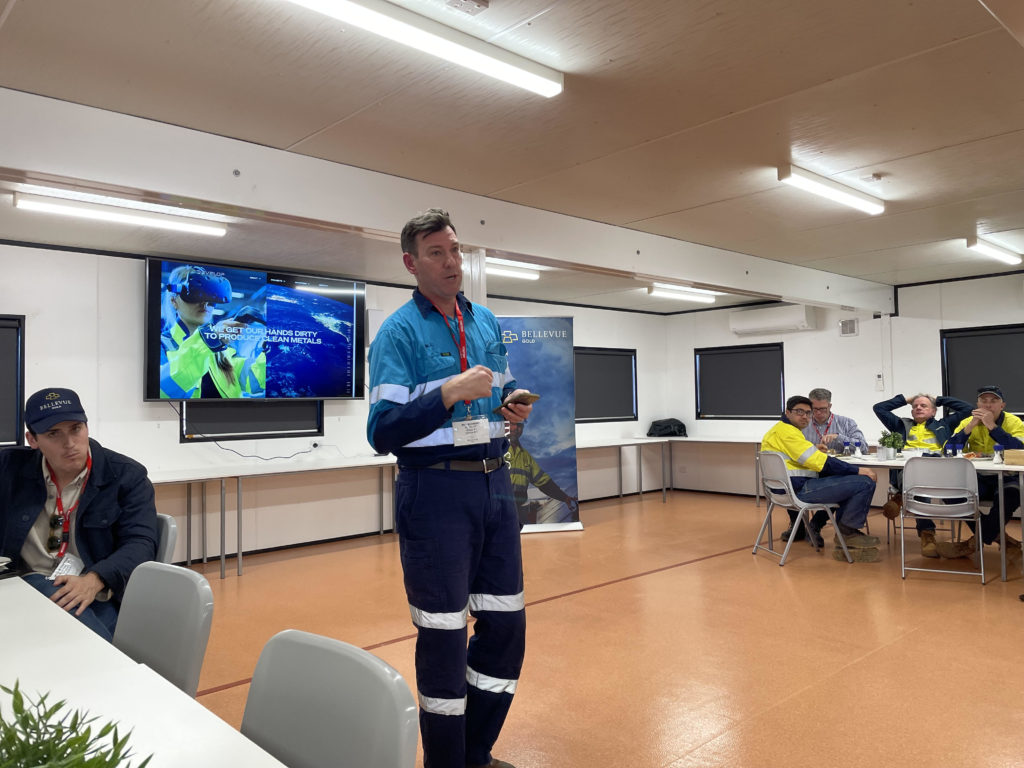Diggers and Dealers: Bill Beament led Northern Star into the ASX 100 and he says he’s never going back inside the club
Mining
Mining
Bill Beament famously took Northern Star Resources (ASX:NST) from a struggling penny stock explorer to one of Australia’s largest ASX 100 mining companies in a decade.
That’s the aim right? Fame, fortune, to make it big.
Back in the game with emerging mining services stock Develop Global (ASX:DVP), which has grown fourfold into a $365 million company since Beament took the lead early last year, he now says he never wants to go back there.
Speaking to analysts, investors, miners and journalists on the eve of this year’s Diggers and Dealers forum in Kalgoorlie, Beament says the value will be made smaller down the scale by growing small caps.
Develop owns the Sulphur Springs and Woodlawn zinc and copper mines, where it plans to produce its own copper and zinc for global green energy and battery markets.
Beament also boasts the mining contract at Bellevue Gold’s (ASX:BGL) self-named “green gold” mine in WA, and is looking to take equity in other mines in exchange for mining services deals.
But he is not looking to turn Develop into the next resources major, Beament says.
“We don’t want more than two or three mining contracts. So again, you know, you range between six and seven types of operations,” he said.
“So that’s manageable, it’ll keep us out of the ASX 100 in the years to come, because I’ll never go back there again.
“I will literally sell something and give it back to shareholders, mark my words and write that down.
“I never want to go there again, it’s a different shareholder base and I love the ASX 300, ASX 200 shareholders, they’re the ones that move the needle.”
Under Beament’s leadership between 2009 and 2020 Northern Star hit an all time high of $16.56, a massive 1600x rise in its value on the back of an aggressive program of mine acquisitions in Western Australia.
Since then it has fallen 52% from its high, its market cap falling from over $16 billion after its merger with Super Pit co-owner Saracen Mineral Holdings to ~$9 billion.
It should be said that’s due to a number of factors — global supply chains, rising costs, labour shortages, falling gold prices and a general antipathy from investors to the sector.
But Beament says bigger has not proven to be better for Australia’s top gold miners.
“Once you get in the ASX 100, tell me who does 100% returns in there?” he argued.
“My old shop and Saracen, their value creation was in the ASX 200, not the ASX 100; in fact it probably went backwards in that.
“There’s an optimum size for resource companies that can create returns for their shareholders, a great return on equity, and return on capital.
“I know what that size is and I know a (future) $3-5 billion company keeps me out of the ASX 100.”

With labour and skills shortages dominating Australia’s mining investment landscape, Beament says the mining services sector is sleepwalking into a looming nightmare.
Private operators like Byrnecut and Barminco who have dominated the landscape for years are going public or seeing their leaders age.
Australia is still the training ground for the world’s most productive underground miners, an essential and growing skill with ESG and deep exploration meaning more and more mines will be underground.
But many of these workers are heading overseas, particularly to Africa, where they are closer to Europe and where companies generate much stronger margins.
“This is going back to what happened in ’04, ’05, ’06, ’07 – the underground boom went through and the industry radically changed. This is that on steroids now because back then Byrnecut and Barminco went offshore,” Beament said.
“That’s where the margins are now and this is gonna get really interesting to build underground mines moving forward.
“We see that as an opportunity for us. I’ve talked about a lot before the world’s commodities are going underground. It’s getting harder to mine open pits anywhere globally.
“Clean future-facing metals, predominantly geology is underground and we’ve found anything that outcrops.”
Beament says companies like Develop need to be there to train the next generation and maintain Australia as a training ground for the mining services industry.
He also believes the industry needs to address issues with workforce pay structures.
Jumbo operators, miners who use massive production drills to blast rock in underground mines, currently get paid like athletes but they can’t stay on the tools forever.
That means their experience can be lost to the industry.
“I guess a lot of the stuff-ups in the industry, there’s some interesting ways how you man up and and sort of structure your site, like our jumbo operators. They’re like the David Beckhams of the soccer team,” Beament said.
“They’re the primadonnas, get paid a fortune, and the poor backmen get paid bugger all but they’re the glory people.
“So we pay our jumbo operators so much but our frontline supervisors, shift boss that controls the whole mine for the day and night, they get paid less than half of the jumbo operators.
“So we’re fixing things like that, paying a lot more than the industry for shift bosses which is really, really important.
“Because all of a sudden, we get jumbo operators getting to the end of their career where they need to hang the boots up and retire. But when they get paid so much the step back in pay is too much.
“So we’ve got all these great people that should be in management now.”